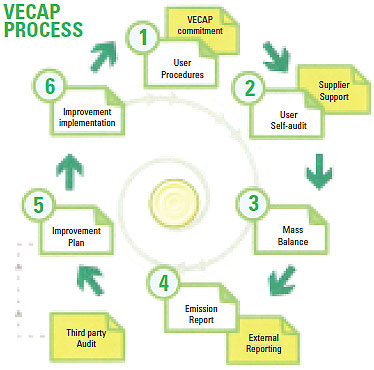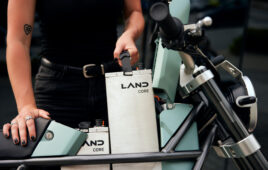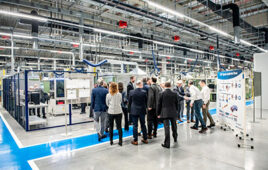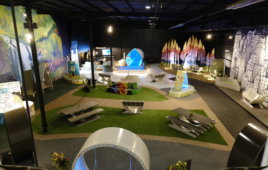European manufacturers, once again, offer U.S. companies a worthwhile standard: This time it is VECAP, voluntary procedures to help us become better environmental stewards.
As if the competitiveness in the global marketplace isn’t fierce enough, U.S. companies face increasingly more compliance issues before they manufacture and ship new products. However, adhering to regulations isn’t necessarily a bad thing. Although many industry guidelines and government regulations have been initiated, companies abide by them to help protect the environment and the people who come in contact with their manufactured goods.
The Voluntary Emission Control Action Program (VECAP) is a proactive program that was established in the UK in 2004. Based on ISO 14001, an environmental management standard, VECAP was introduced to reduce, and where possible, eliminate brominated flame retardant (BFR) emissions into the environment from manufacturing processes. BFRs are a group of organic substances that inhibit or suppress combustion in organic material. Therefore, they play a vital role in fire safety programs in the development of new products. BFRs are used in the production of electrical and electronic equipment, textiles, and plastics in vehicles, building materials, paints, and insulation foam. Although BFRs are a key component in developing safe products to ensure that fire safety is maintained over the products’ lifetime, they can create an environmental hazard because of their extremely harmful properties.

The VECAP process is accomplished through company visits, training, and distribution of a wide range of documents that have been developed and are available in several languages.
For example, penta-, octa-, and decabromodiphenyl ether (BDE), tetrabromobisphenol-A, and hexabromocyclododencame account for the largest volumes of brominated flame retardants in use around the world today. Documentation shows that penta-, octa-, and deca-BDEs have properties that could make them quite hazardous to everyone’s health and the environment. As a result, manufacturers that emit BFR emissions recognize the need to control and reduce these emissions.
VECAP was adopted in the U.S. and Canada in 2006. North American manufacturers that embrace VECAP implement processes to monitor, manage, and minimize BFR emissions used in plastics, including those used in automobile and textile applications. It’s tricky business though, because although BFRs contribute to product safety, their existence in the atmosphere at harmful levels cause environmental problems.
Recently, the Plastics Environmental Division of the Society of Plastics Engineers (SPE) announced the recipients of the Global Plastics Environmental Conference 2009 Environmental Stewardship Awards. One notable winner, Eagle Performance Products of Calhoun, Georgia was recognized for its “Enabling Technologies in Processes and Procedures.” The company instituted VECAP throughout its facilities to reduce waste and emissions from plastic additives, and promoted such responsibility throughout its supply and customer chains.
John Friddle, Eagle Performance Products president, says VECAP procedures helped reduce costs and improved processes at his company. He hopes to expand its waste reduction beyond VECAP guidelines. Other VECAP practices at Eagle include reducing volatile organic compound levels, helping customers reduce waste, recycling throughout its operations, and developing closed loop systems with its suppliers and customers.
VECAP
www.vecap.info
Eagle Performance Products
www.eagleperformanceproducts.com
::Design World::
Filed Under: Green engineering • renewable energy • sustainability





Tell Us What You Think!